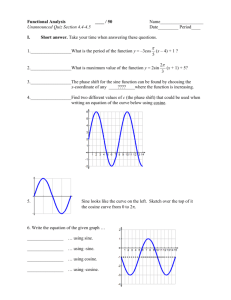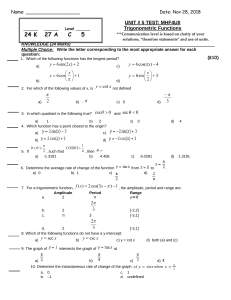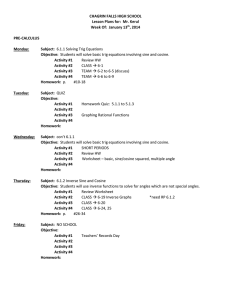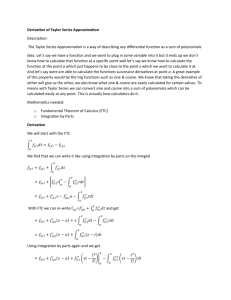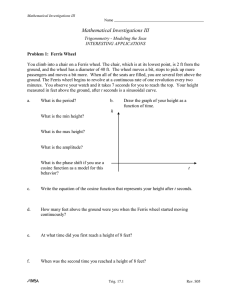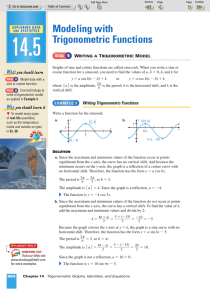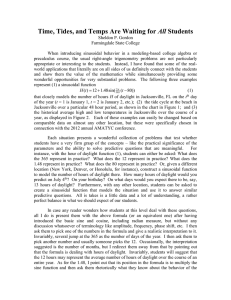MODELLING with TRIGONOMETRIC FUNCTIONS (Sine and Cosine Functions)
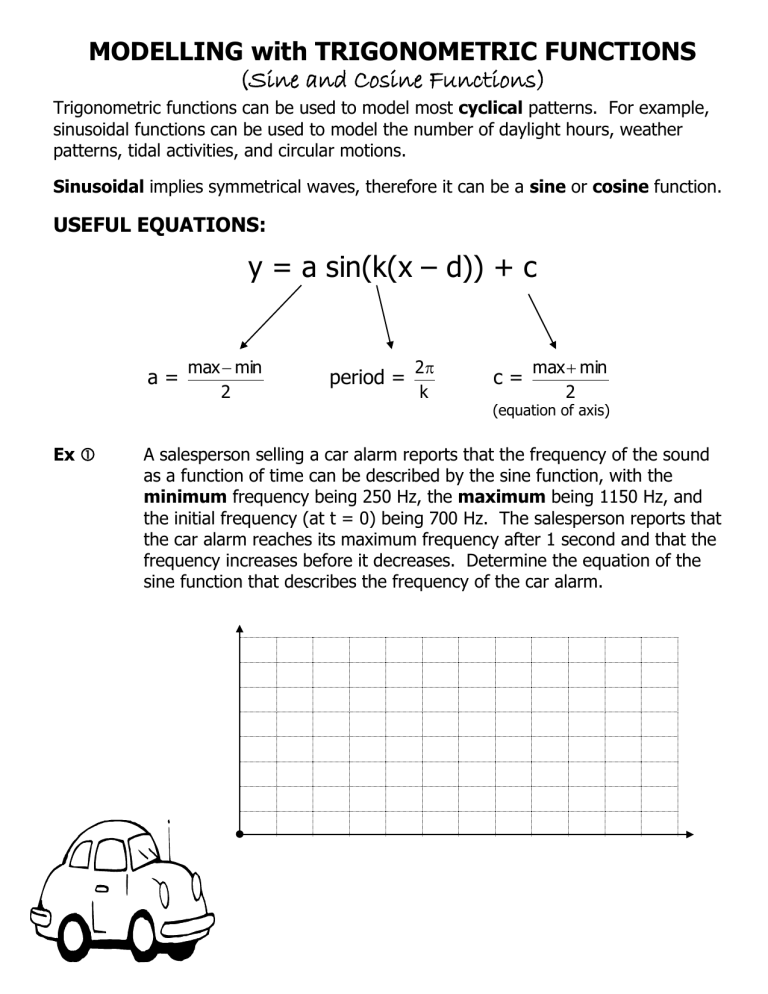
MODELLING with TRIGONOMETRIC FUNCTIONS
(Sine and Cosine Functions)
Trigonometric functions can be used to model most cyclical patterns. For example, sinusoidal functions can be used to model the number of daylight hours, weather patterns, tidal activities, and circular motions.
Sinusoidal implies symmetrical waves, therefore it can be a sine or cosine function.
USEFUL EQUATIONS:
y = a sin(k(x – d)) + c
a = max
2 min
period =
2 k c = max
2 min
(equation of axis)
Ex A salesperson selling a car alarm reports that the frequency of the sound as a function of time can be described by the sine function, with the minimum frequency being 250 Hz, the maximum being 1150 Hz, and the initial frequency (at t = 0) being 700 Hz. The salesperson reports that the car alarm reaches its maximum frequency after 1 second and that the frequency increases before it decreases. Determine the equation of the sine function that describes the frequency of the car alarm.
Ex Oscar takes a ride on the Ferris wheel at the Mathville Amusement Park.
He boards the wheel at a height of 2m (t=0s) above the ground. It then takes him 40s to reach a maximum height of 18m above the ground. a) Determine the equation of the cosine function that describes Oscar’s height above the ground as a function of time as he rides the Ferris wheel. b) What does the amplitude of the function represent in this situation? c) What does the period of the function represent in this situation? d) Write the equation describing Oscar’s ride in terms of a sine function.
Homework: p.360 – 362 #1, 5 – 7, 10, 13 (think!)
